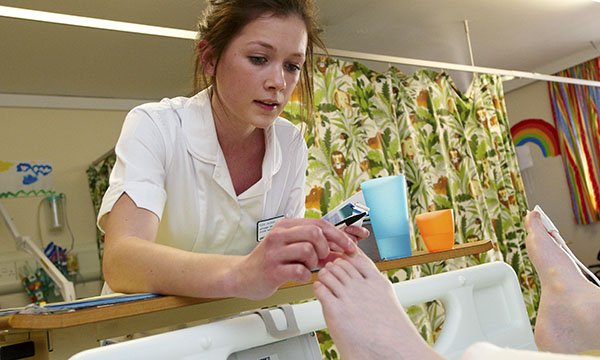NHS staffing: how will ambitious nursing student targets be met?

Calls for more detail over funding and practicalities of meeting increased nursing student targets laid out in the NHS workforce plan

More detail is needed on how university nursing degree places will increase by more than 30,000 a year under the government’s ambitious NHS workforce plan, health leaders have said.
Analysis by the Health Foundation think tank has raised concerns about how targets to increase student intake over the next decade will be delivered without engagement with educators and NHS trusts alongside funding for additional places.
Increase in student numbers not possible without enough teaching staff
The research shows that nursing, midwifery and nursing associate training places would need to rise by 32,000 by 2031, with first-year places for all clinical roles increasing by 50% overall to meet the ambitions in the NHS Long Term Workforce Plan.
The latest Universities and Colleges Admissions Service (UCAS) data show a 16% drop in applications for nursing degrees in 2023.
The Health Foundation said: ‘To deliver on the plans, universities and NHS providers will need to ensure there are sufficient teaching staff to deliver the expanded training and provide sufficient clinical placements to enable on-the-job training.’
But with no current plans to expand the overall number of student places at universities, it warned this could affect staff and university places in other subjects as funding is diverted.
Shortfall of supervisors needed to meet placement hour requirements
A Department of Health and Social Care spokesperson told Nursing Standard the workforce plan is backed by more than £2.4 billion over the next five years to fund additional education and training places, including doubling the number of medical school places.
They added there are ‘record numbers of staff working in the NHS to help train students, with almost 6,000 more doctors and over 15,200 more nurses than last year’.
But Newman University’s head of nursing Kevin Crimmons said that more nurses in the NHS did not necessarily translate to enough placement supervisors to assess students while they attain the 2,300 clinical placement hours needed to gain registration.
‘Current student numbers cannot be expanded as there are not enough placement supervisors (which is a Nursing and Midwifery Council requirement) to supervise and assess students while on placement for the 2,300 hours required,’ he told Nursing Standard.
Extra funding needed for universities to expand health courses
‘Given the current nurse staffing crisis in the NHS, this is set to worsen rather than improve. Some of the £2.4 billion the government quotes could be used to bring the funding per nurse per week closer to the funding per medical student per week. The disparity is several hundred pounds.
‘Without extra funding universities will find it difficult to expand health courses and given nursing academics have to be registrants, this would also place strain on what is a diminishing pool of course leaders.’
In other news

